Squeezing a world of content into a museum site
Horniman Museum & Gardens Website
Our studio is filled with light and music.
There are multiple meeting rooms, a well stocked kitchen, and an indoor garden (with fishpond). Talk to us about access needs, environmental factors and any accommodations we might make to enhance your visit. Pop-in for tea and stay to use a spare desk for as long as you need.
11 Greenwich Centre Business Park,
53 Norman Road, Greenwich
London SE10 9QF
We’re next to Greenwich train and DLR station. We have a door right on the concourse but it’s different to our postal address. Find us via: what3words.com/hungry.means.author
This video shows the route to take from the train that will arrive at Greenwich rail station from London Bridge. There's a gentle slope next to the staircase.
If you have to come by car, we have a couple of parking spaces. We have a charging point that you are welcome to use if you have an electric car. Call ahead and we'll make sure the spaces are free. Use our postcode (SE10 9QF) to guide you in.
We’d love to hear from you. Use whichever medium works best for you.
11 Greenwich Centre Business Park,
53 Norman Road, Greenwich
London SE10 9QF
It's exciting to chat about potential new projects. We don't have a ‘sales’ team or a form to fill in. Call us or give us a little detail via email and we'll get straight back to you.
[email protected]If you're a client then you'll be best served by calling us or contacting us via ClickUp, otherwise you can use this dedicated email that reaches all of the digital team.
[email protected]This email hits the inboxes of the people who deal with our bookkeeping and finances.
[email protected]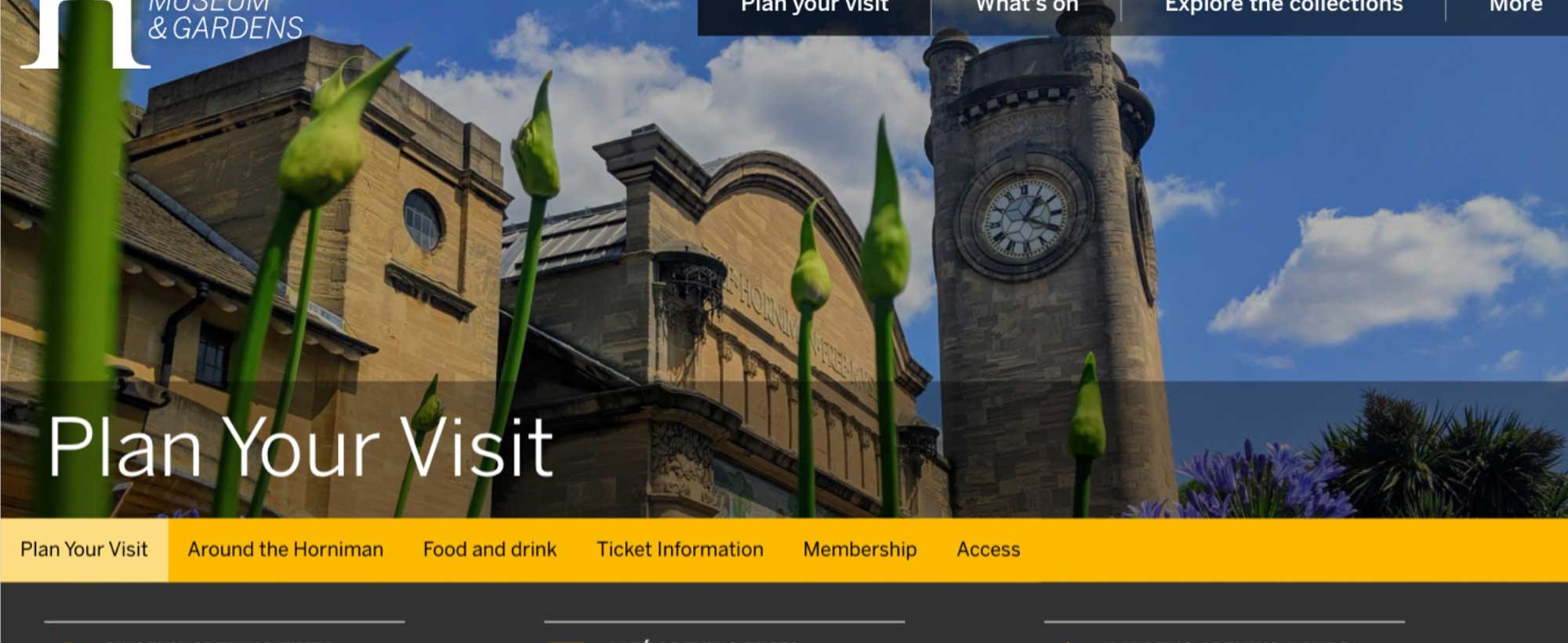
Horniman Museum & Gardens Website
From global cultures to natural wonders. Squeezing a world of content into South London’s most interesting museum (and gardens).
Frederick John Horniman’s family made its fortune trading in tea (Horniman is still a popular tea in Spain and Portugal). Frederick used his position to travel the world and invest in social causes.
He amassed a huge anthropological collection that filled his home and grew so large that he and his family had to move out. That was the start of the Horniman Museum, a remarkable visitor experience that has continually evolved and reinvented itself.
From Anthropology to Zoology, more than a century later, the Horniman Museum and Gardens continues Frederick’s legacy and vision “to bring the world to Forest Hill”.
The buildings have expanded in all directions, adding an eco-centre, an aquarium, and much much more.
Eclecticism is part of the charm, but it does have some star attractions, including a world-beating historic musical instrument collection, and the iconic over-stuffed walrus (the nineteenth century taxidermists weren’t sure how walruses were meant to look and overdid things a bit).
We started working with the Horniman during a period of reflection and change for their organisation.
They’d been hugely successful in growing visitor numbers and had established a firm reputation as a family destination. Family visits and garden picnic are important but they are just a part of the offering.
With the arrival of a new chief executive, they wanted to expand their communication and reputation. The website would play a key role in that repositioning.
 Digital Manager, Connie Churcher in front of the infamous stuffed walrus.
Digital Manager, Connie Churcher in front of the infamous stuffed walrus.
 Some of the Cog team by the iconic bandstand.
Some of the Cog team by the iconic bandstand.
Many of our team had visited the Horniman over the years: school trips, music events, and family outings. And, as we’re also based in South East London, we already understood the special place the museum and gardens holds in the hearts of local people. We were all excited to learn more and help them create a brilliant new website.
We knew this was going to be a big project for us. We wanted to involve the whole team so our starting point was a day at the museum, setting ourselves tasks to visit every corner and experience every aspect from different visitor perspectives. We wrote about that fun day out at the time.
As with most museums, only a fraction of the collection is on display at any time (in this case, the rest is stored in a secret, off-site storage facility). Part of our brief was to turn that huge hidden archive into a searchable, useful online resource. It’s been quite an undertaking.
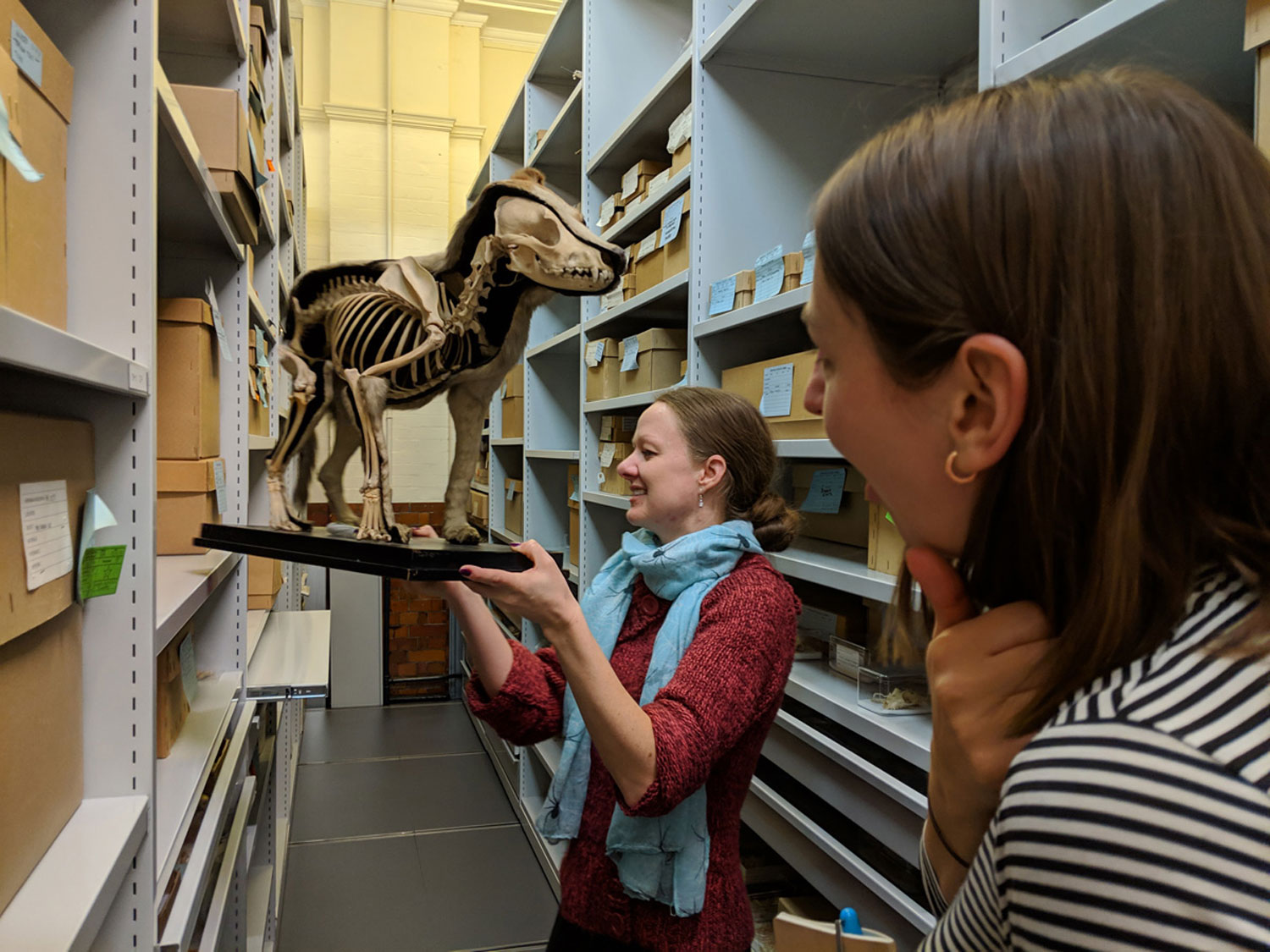 Anna, visiting the secret archive storage facility.
Anna, visiting the secret archive storage facility.
As well as the archive team, the organisation is comprised of many teams. We wanted to hear from them all. So the first phase of the project was a deep discovery process. We conducted various face-to-face interviews and ran multiple workshops with staff. And, as accessibility is of course important we convened specific sessions with their access panel.
We focused on audiences, comparing the needs of the current family audience to the impressions adults might have. We made sure to cover complex wider audiences, such as teachers working with the education team, funders, academics and researchers, and people looking to hire the museum’s buildings for private events.
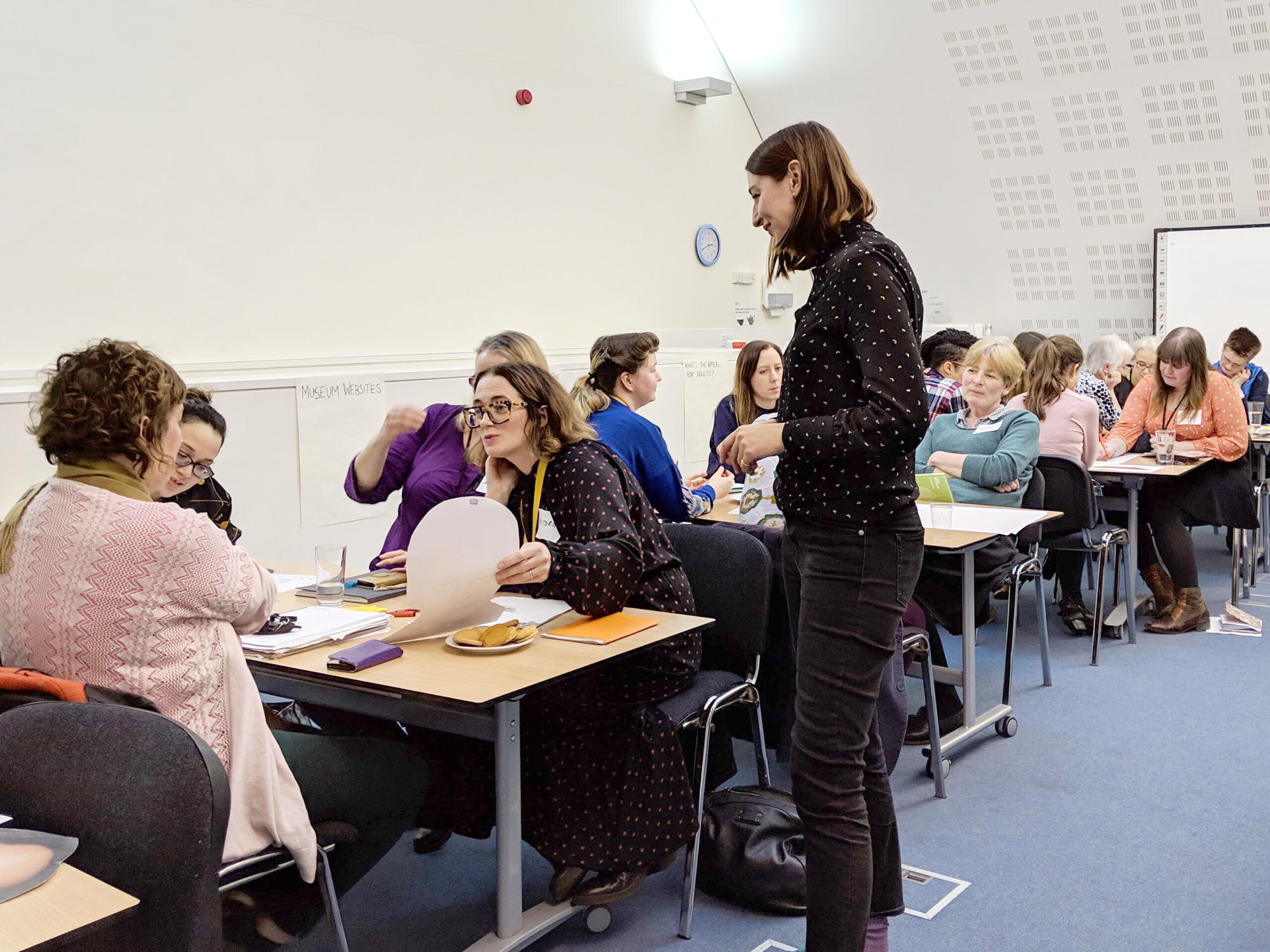 Anna, leading a workshop with the staff team, chatting about audiences.
Anna, leading a workshop with the staff team, chatting about audiences.
Together we created lots of ‘personas’ to give us specific insights into the types of people who might visit at different times, might be interested in different parts of the offer, might have specific attitudes, might donate or join, might never physically visit etc. These personas became a reference point throughout the design and development stages.
The discussion, perspectives and personas gave us a much wider understanding of the Horniman. It built on our experiences as visitors, enabling us to ensure that the website wasn’t designed from a limited perspective.
It laid the foundations for the whole project, and influenced every stage of the process from our initial planning, to the design and build.
We learned a lot from the access panel. It was important for us to approach every aspect of the design with accessibility in mind. A systematic approach to accessibility benefits everyone. As well as being important to remove barriers to disabled people, situational or temporary needs are also addressed with a well designed and thoughtfully built website.
All of that discovery work fed into the design stage.


In working on the concepts for the designs, we needed to balance the visitor information with the need to position the organisation as a museum (and gardens) with something for everyone.
We knew that we wanted to capture the essence of Frederick Horniman’s original vision – “to bring the world to Forest Hill”. But we also knew that would mean different things to different people (including teams within the museum).
Through discussions with the teams we were also sure that we needed to bring current issues and topics to the fore. The Horniman team work hard to tackle global issue and make them relevant to local audiences (through the collections and beyond). We wanted to bring the academic and curatorial teams’ voices to the fore – whether that be in tackling climate change, talking about issues of migration, or talking forthrightly about the sometimes uncomfortable stories behind items in their collections.
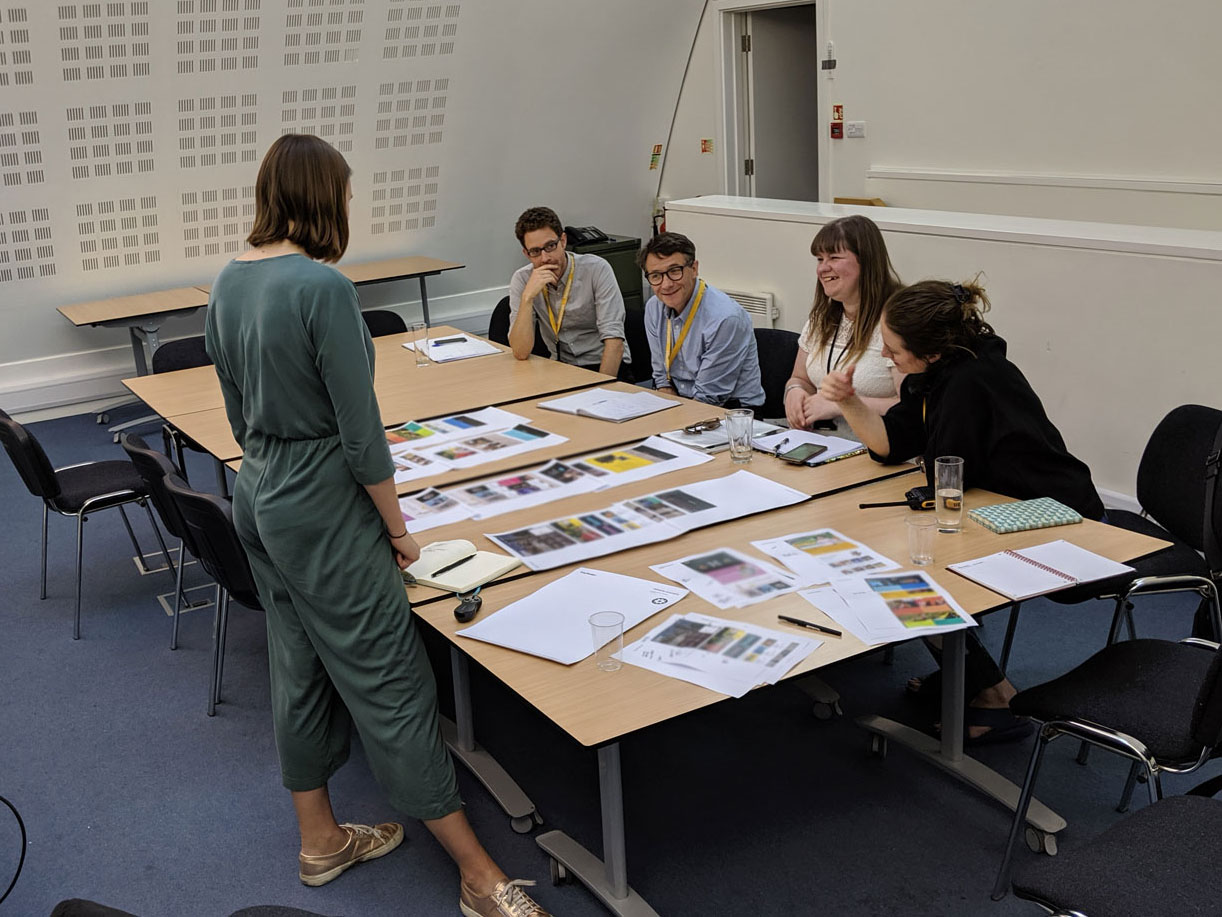 Anna presenting a range of designs to the project’s key stakeholders.
Anna presenting a range of designs to the project’s key stakeholders.
With these as our themes we began developing designs that would also welcome and inform visitors and showcase the incredible collection, whilst highlighting the charitable status of the museum, and making the case for financial contributions – through ticket sales, shop sales, donations, memberships and hire.
As the starting point for discussions, we presented a range of concepts that approached these challenge from different perspectives, with varying emphasis on specific areas.
Through a process of feedback we created designs that embody the personality of the organisation – a vital academic institution with a truly accessible public face; welcoming to everyone.
Cog managed the complex process and made it feel simple. They were flexible and enthusiastic in running workshops, meeting with colleagues and visiting the museum and gardens. I really feel they took the time to get to know us and our visitors. The early engagement from across the organisation fed smoothly into the design and development processes, and has led to a new website the whole team is hugely proud of. We look forward to a long working partnership.
This is a big site with a vast amount of content. We’ve used WordPress as the underlying content management system, with lots of customisation to make it as simple as possible for different people to add content efficiently.
We made sure to run with this integrated approach across the site, making sure displays, collections and events could run through all pages. The collections in particular had not previously been integrated into the site so the ability to feature objects across pages was particularly important.

We worked with the collections management team to create a slick and seamless integration that rewards casual visitors as well as being a useful tool for academics and researchers.
This depth of information doesn’t take away from the ability for visiting audiences to find quick information at a glance. Pullouts at the top of pages in particular help to do this.
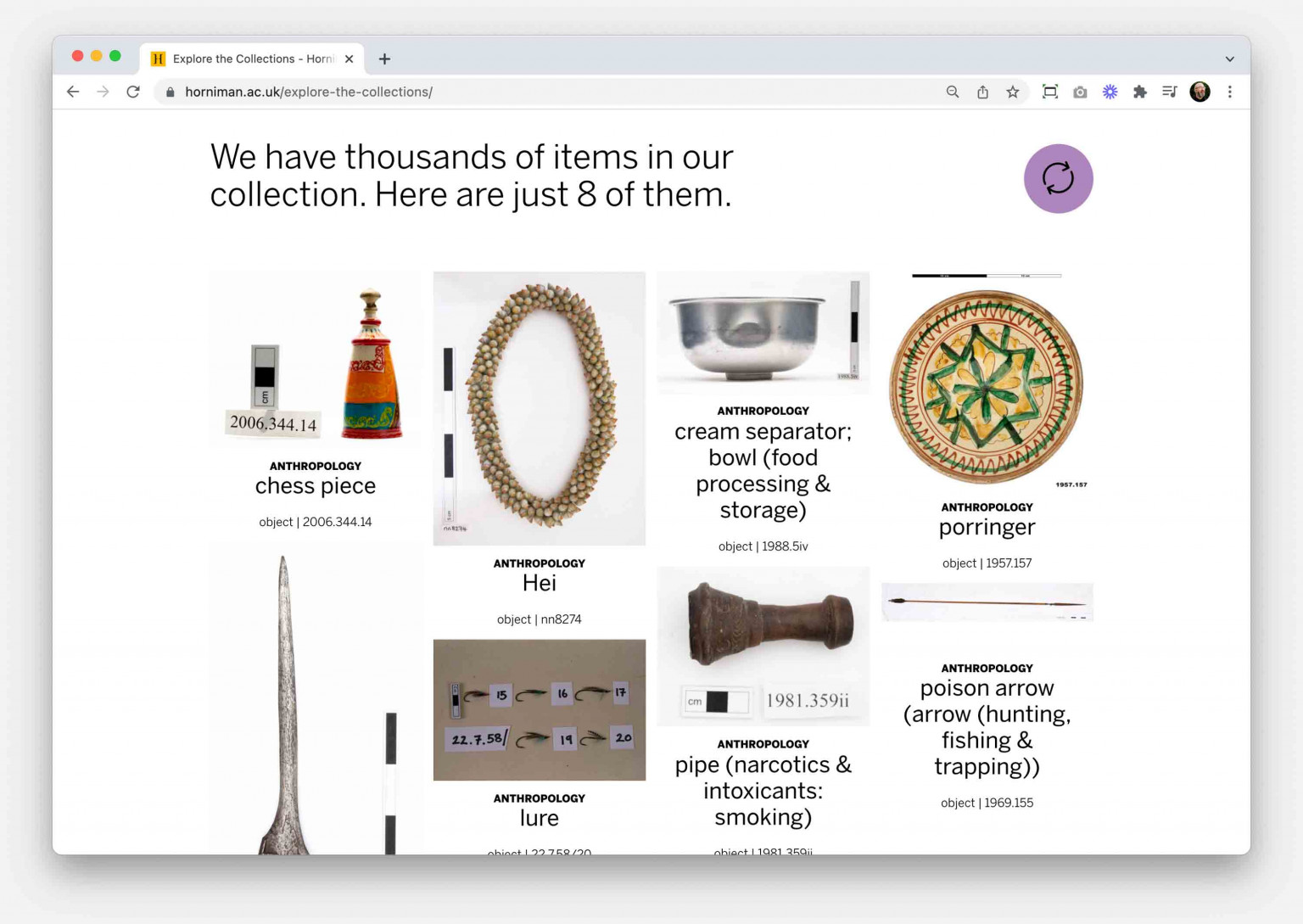

As we neared the launch date for the new site, the Horniman team were adding the huge amounts of content and were putting the finishing touches and flourishes to the site.
And then Covid-19 happened. First the museum had to close to visitors and then the gardens were shut.
But we still had an imperative to launch the new site (old services were being switched off and previous contracts had run their course). The Horniman team were brilliant as we put together temporary plans, turned off certain features and brought others to the foreground.
It all really helped to emphasise how flexible and adaptive the site is, across all platforms and screen sizes.
It’s simple for their teams to add content, effective as a communications and fundraising platform, and allows users to quickly find what they need, whether that’s planning a visit, a deep dive into the collection, downloading resources for teachers, or planning a picnic with friends in the garden.
We’re hugely proud to have delivered a site on this scale, especially at such a difficult time. We’re looking forward to a long and fruitful working relationship, adapting and growing the site as the organisation continues their journey of renewal and reinvention.
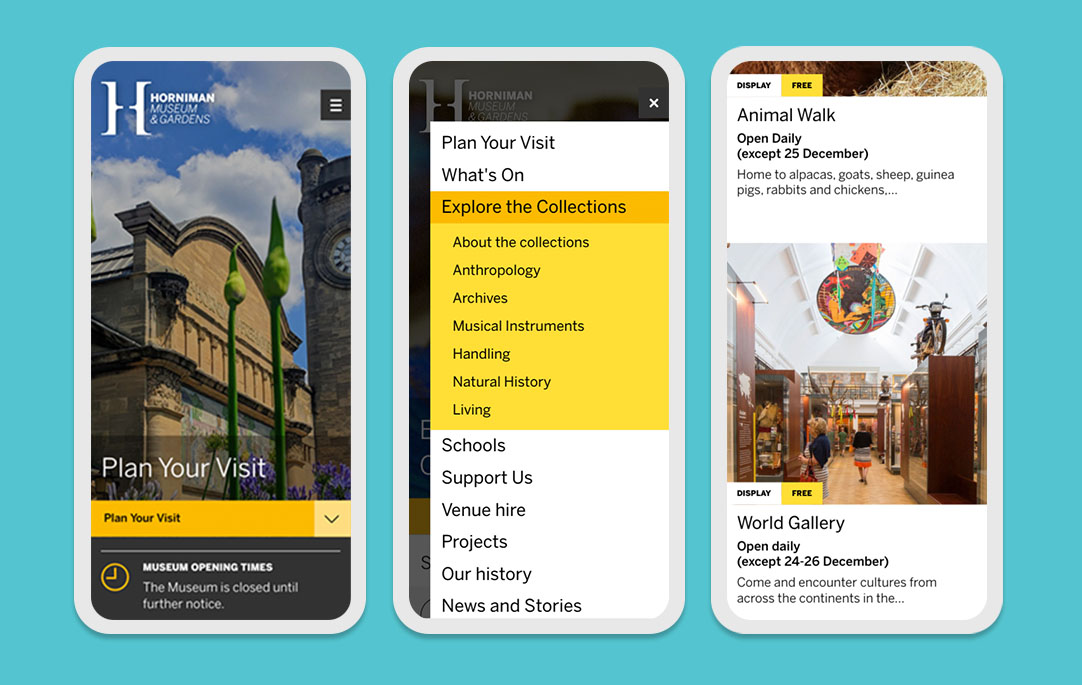 Carefully considered design for mobile screens
Carefully considered design for mobile screens